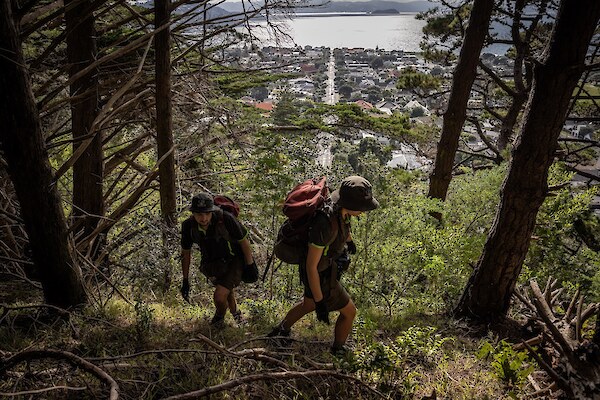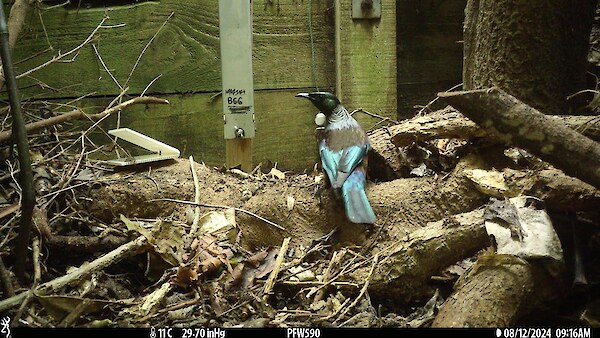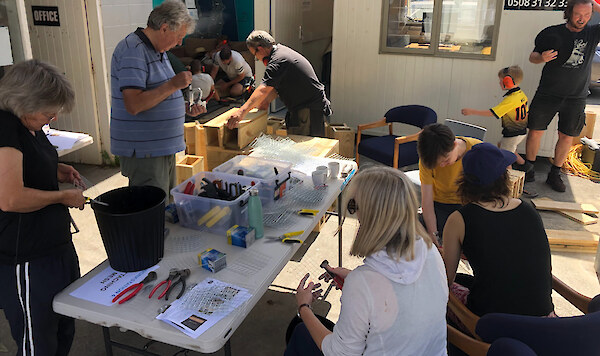Turning the tide on pests: Wellington’s predator-free mission
This article was original shared in Tō Tātou Pōneke Our Wellington by Wellington City Council.
 Two PFW field staff working in SeatounPredator Free Wellington is leading the way in conservation with a citywide project working to remove invasive predators while building communities.
Two PFW field staff working in SeatounPredator Free Wellington is leading the way in conservation with a citywide project working to remove invasive predators while building communities.
The idea began in 2016 with the launch of the nationwide initiative of Predator Free 2050.
Wellington quickly stepped up, with dozens of community groups operating across the city to remove predators like rats, stoats, weasels, and possums from the capital’s green spaces.
Predator Free Wellington was officially established in 2017, and backed by Wellington City Council, Greater Wellington Regional Council, Taranaki Whānui ki Te Upoko o Te Ika, and others – all united by the goal of restoring native wildlife to the city.
The project started with phase one on the Miramar Peninsula, an area surrounded by water and home to 10,000 people. After years of dedicated work, Miramar Peninsula was declared predator free in 2023. Now, the team is halfway through phase two, which stretches from Ōwhiro Bay and into the CBD.
Communications Programme Lead David Klein says the team’s progress reflects years of refinement and community learning.
“It took time to learn the best methods, but now we’re working faster and smarter. We’re on track to complete our project in 2030,” he says.
The results speak for themselves. Native bird counts have soared, property damage has dropped, and Wellingtonians are hearing more tūī and kererū in their suburbs. But the biggest success story isn’t just ecological – it’s social.
“There’s something inspiring about people working together towards a really ambitious goal,” says David. “It’s not just conservation – it’s community building.”
One of the project’s greatest achievements has been the growth of community connection and leadership. Predator Free Wellington has united people from all walks of life – schools, families, local businesses, and entire neighbourhoods – around a shared environmental goal.
 A tūī seen on a trail cameraAcross the city, residents have become active participants, hosting traps on their properties, helping monitor wildlife, and spreading awareness through community networks.
A tūī seen on a trail cameraAcross the city, residents have become active participants, hosting traps on their properties, helping monitor wildlife, and spreading awareness through community networks.
A 2025 evaluation report by Predator Free Wellington explores the social, cultural, and environmental ripple effects of the project with a highlight on community voices describing involvement in the project.
For Sue, a long-time volunteer with Predator Free Miramar, the shift in community engagement was transformative.
“We were all in it together, and it didn’t matter who you were or where you lived. The community really owned it,” she says.
Ross, a retired teacher and early trapper, says the project gave people a sense of hope and purpose.
“It shows them they can make a tangible difference. That’s the real change – from people thinking we couldn’t make a difference to having something positive that the whole peninsula can be proud of.”
At Miramar Peninsula Preschool head teacher Helena has seen that same passion take root in the next generation. Her students now identify native birds, learn about pest species, and even tend to their own mokomoko (lizard) garden.
“Even if some rats come back, the feeling we’ve instilled in children and their families will last,” she says.
“Kids growing up today might never see a rat,” says David. “They’ll think it’s normal to have rare birds in their backyard – and that’s exactly how it should be.”
 The community helping build wooden trapping tunnelsBehind the community efforts is a coordinated, science-based strategy. Field staff and volunteers work grid by grid, using traps, bait stations, chew cards, cameras, and trained dogs to detect and eliminate remaining predators. Once an area is cleared, the focus shifts to biosecurity – ensuring pests stay out through continuous monitoring and community reporting.
The community helping build wooden trapping tunnelsBehind the community efforts is a coordinated, science-based strategy. Field staff and volunteers work grid by grid, using traps, bait stations, chew cards, cameras, and trained dogs to detect and eliminate remaining predators. Once an area is cleared, the focus shifts to biosecurity – ensuring pests stay out through continuous monitoring and community reporting.
Public involvement remains crucial. “We rely on people to report sightings, droppings, or anything unusual,” says David. This collaboration between Predator Free Wellington and residents keeps the project dynamic and responsive.
Predator Free Wellington has proven that environmental success depends on people as much as on science. It’s about leadership, teamwork, and shared pride – a city rediscovering its connection to nature and to one another.
Posted: 21 October 2025
